Education of a Prince is a 1927 French silent comedy film directed by Henri Diamant-Berger and starring Edna Purviance, Pierre Batcheff and Flora le Breton. It was adapted by Henri Diamant-Berger from the 1900 play of the same title by Maurice Donnay. This was Purviance's last film before retiring in the next year. In 1938 Alexander Esway directed a remake Education of a Prince with adaptation and screenplay written by Henri-Georges Clouzot,.

Marcel L'Herbier was a French filmmaker who achieved prominence as an avant-garde theorist and imaginative practitioner with a series of silent films in the 1920s. His career as a director continued until the 1950s and he made more than 40 feature films in total. During the 1950s and 1960s, he worked on cultural programmes for French television. He also fulfilled many administrative roles in the French film industry, and he was the founder and the first President of the French film school Institut des hautes études cinématographiques (IDHEC).
Le Carnaval des vérités is a 1920 French silent film written and directed by Marcel L'Herbier.

El Dorado is a French silent film directed in 1921 by Marcel L'Herbier. The film was notable for integrating a number of technical innovations into its narrative of a "cinematic melodrama". It achieved considerable success on its release, as a ground-breaking film that was distinctively French at a time when the cinema was felt to be dominated by American productions.

L'Inhumaine is a 1924 French science fiction drama film directed by Marcel L'Herbier. It has the subtitle histoire féerique. L'Inhumaine is notable for its experimental techniques and for the collaboration of many leading practitioners in the decorative arts, architecture and music. The film caused controversy on its release.

Jaque Catelain was a French actor who came to prominence in silent films of the 1920s, and who continued acting in films and on stage until the 1950s. He also wrote and directed two silent films himself, and he was a capable artist and musician. He had a close association with the director Marcel L'Herbier.
Marcelle Pradot was a French actress who worked principally in silent films. She was born at Montmorency, Val-d'Oise, near Paris. At the age of 18 while she was taking classes in dancing and singing in Paris, she was asked by Marcel L'Herbier to appear in his film Le Bercail (1919). She went on to appear in a further eight of L'Herbier's silent films, and then in his first sound film L'Enfant de l'amour (1930) with which she ended her acting career. She was noted as an aristocratic beauty, and she was described by the critic Louis Delluc as "the Infanta of French cinema".
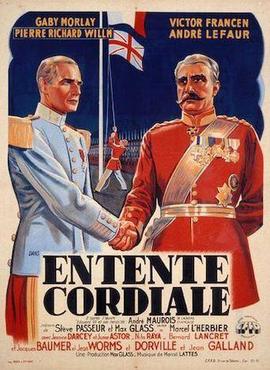
Entente cordiale is a 1939 French drama film directed by Marcel L'Herbier and starring Gaby Morlay, Victor Francen and Pierre Richard-Willm. The film depicts events between the Fashoda crisis in 1898 and the 1904 signing of the Entente Cordiale creating an alliance between Britain and France and ending their historic rivalry. It was based on the book King Edward VII and His Times by André Maurois. It was made with an eye to its propaganda value, following the Munich Agreement of September 1938 and in anticipation of the outbreak of a Second World War which would test the bonds between Britain and France in a conflict with Nazi Germany.

The Fatted Calf is a 1939 French comedy film directed by Serge de Poligny and starring Elvire Popesco, André Lefaur and Armand Bernard. It is based on a play by Bernard Zimmer. The film's sets were designed by Jacques Colombier and Robert Gys.
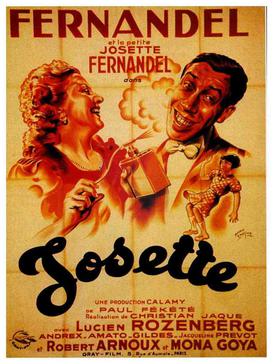
Josette is a 1937 French comedy film directed by Christian-Jaque and starring Fernandel, Mona Goya and Lucien Rozenberg. The film's sets were designed by the art director Pierre Schild.
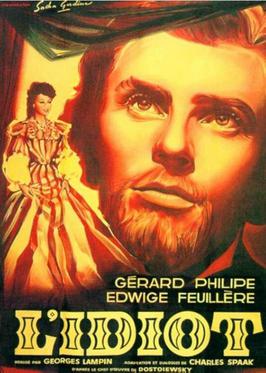
The Idiot is a 1946 French drama film directed by Georges Lampin and starring Edwige Feuillère, Lucien Coëdel and Jean Debucourt. It is an adaptation of Fyodor Dostoevsky's novel The Idiot. The film's sets were designed by Léon Barsacq, credited as the art director. It was shot at the Epinay and Neuilly Studios in Paris.
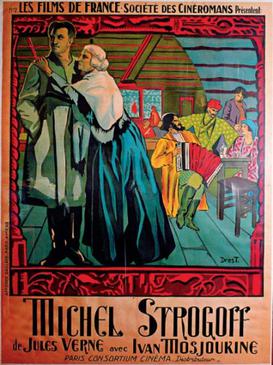
Michel Strogoff is a 1926 French silent historical adventure film directed by Viktor Tourjansky and starring Ivan Mozzhukhin, Nathalie Kovanko, and Acho Chakatouny. It is an adaptation of Jules Verne's 1876 novel Michael Strogoff. In 1961 Tourjanski directed a sequel titled Le Triomphe de Michel Strogoff.
Nathalie Ivanovna Kovanko was a Russian film actress of the silent era who worked in France. Born Natalia Ivanovna Kovanko in Crimea, then part of the Russian Empire, in 1919 she emigrated to France following the Russian Revolution. She married Viktor Tourjansky, a fellow exile. She later returned to live in USSR, where she died in 1967.
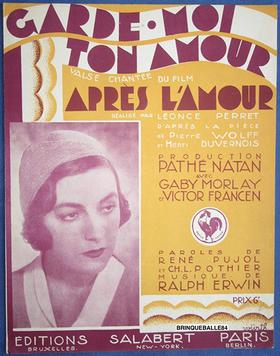
When Love Is Over is a 1931 French drama film directed by Léonce Perret and starring Gaby Morlay, Victor Francen and Tania Fédor. It is based on the 1924 play After Love by Henri Duvernois and Pierre Wolff.
Nights of Princes is a 1930 French drama film directed by Marcel L'Herbier and starring Gina Manès, Jaque Catelain and Harry Nestor. It is an adaptation of the 1927 novel of the same title by Joseph Kessel. The story was remade as a 1938 film directed by Vladimir Strizhevsky.

First Ball is a 1941 French romantic comedy film directed by Christian-Jaque and starring Marie Déa, Fernand Ledoux and Raymond Rouleau. It was shot at the Saint-Maurice Studios in Paris. The film's sets were designed by the art director René Renoux.

Tenderness is a 1930 French drama film directed by André Hugon and starring Marcelle Chantal, Jean Toulout and André Dubosc. The film's sets were designed by the art director Christian-Jaque. It is based on the 1922 play of the same title by Henry Bataille. A separate German-language version Zärtlichkeit was also produced.
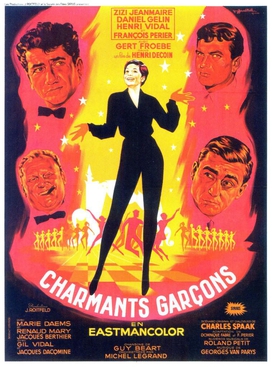
Charming Boys is a 1957 French musical comedy film directed by Henri Decoin and starring Zizi Jeanmaire, Daniel Gélin and Henri Vidal. It was one of two Hollywood-style musicals made by Decoin around this time along with Folies-Bergère.

Francis the First is a 1937 French historical comedy film directed by Christian-Jaque and starring Fernandel, Mona Goya and Alexandre Rignault. It was shot at the Cité Elgé studios in Paris. The film's sets were designed by the art director Pierre Schild.

The Masked Woman is a 1924 French silent crime drama film directed by Viktor Tourjansky and starring Nathalie Kovanko, René Maupré and Jeanne Brindeau. The film's sets were designed by the art directors Eduardo Gosch and Alexandre Lochakoff.















